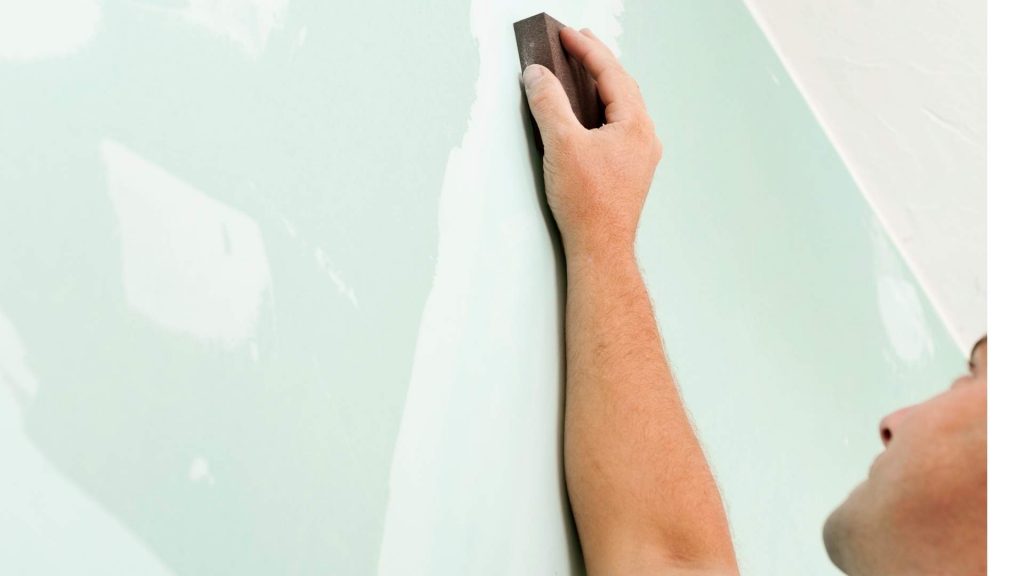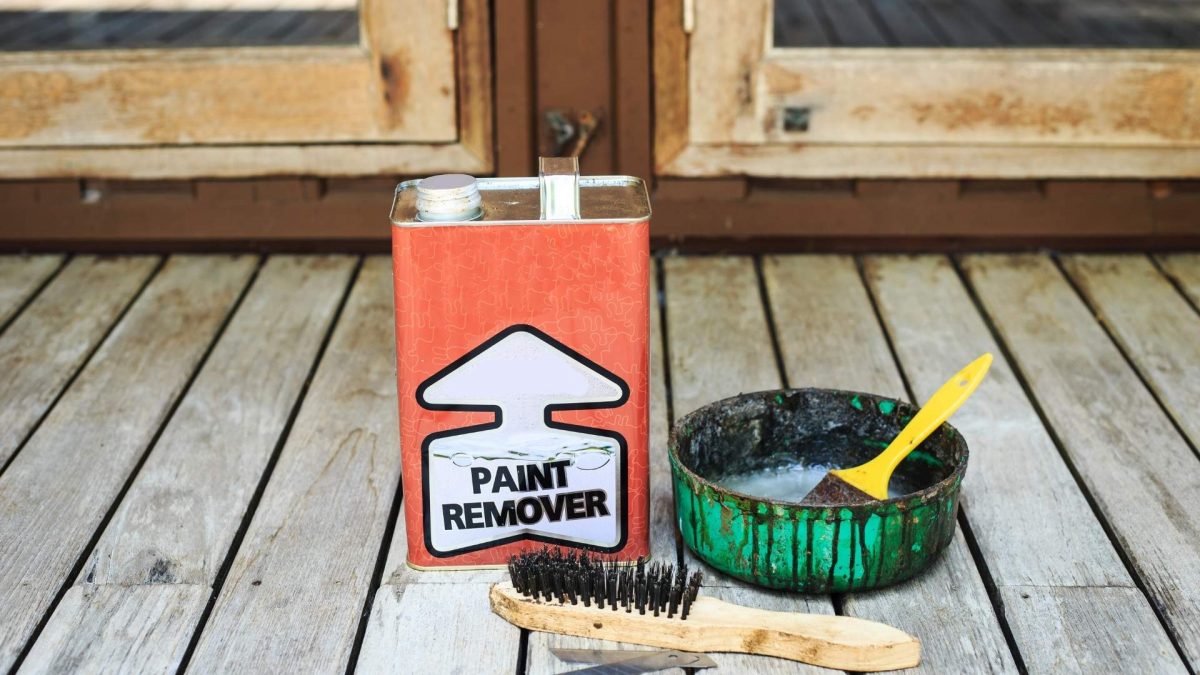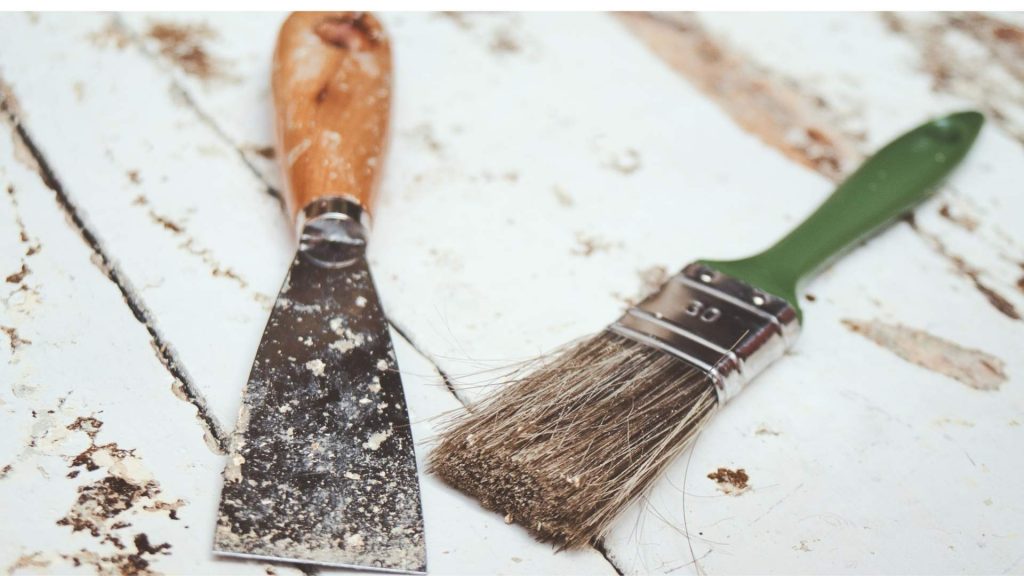Once upon a time, chalk paint was all the rage, but it’s time for a change.
You’re ready for a new look and are wondering how to remove chalk paint — or if it’s even necessary to remove it before repainting.
If you’re wanting to remove chalk paint, but aren’t sure how to go about it, we can help.
In this guide, we’ll talk about …
- How to remove chalk paint from wood; and
- How to remove chalk paint from walls
… and we’ll give you step-by-step instructions for 4 different methods of chalk paint removal.
Table of Contents
- Can Chalk Paint Be Removed Easily?
- 4 Suggestions on How to Remove Chalk Paint
- #1. How to Remove Chalk Paint by Sanding
- #2. How to Remove Chalk Paint with Chemical Strippers
- #3. How to Remove Chalk Paint with Industrial Grade Paint Solvents
- #4. How to Remove Chalk Paint With a Heat Gun
- Let the Pros at A1 Paint Removal, Painting & Restoration Handle All Your Painting Needs
Can Chalk Paint Be Removed Easily?
Chalk paint that has been waxed can not be directly painted over and is more difficult to remove than other types of paint. Unwaxed chalk paint, however, does not need to be removed and can be painted over without the need for primer.
4 Suggestions on How to Remove Chalk Paint
Here at A-1 Paint Removal, Painting & Restoration, we have the know-how to remove all types of paint.
From start to finish, our team of trained professionals knows how to make your chalk paint disappear — and we can have your project repainted in no time.
But just in case you decide you’d rather do it yourself, here are 4 suggestions on how to remove chalk paint on your own.

#1. How to Remove Chalk Paint by Sanding
Sanding is the most natural way of removing chalk paint from wood.
Since sanding produces large amounts of dust, you’ll want to be sure to:
- Keep your workspace well ventilated.
- Wear protective clothing.
- Seal off the vents.
- Cover anything you don’t want to be covered in dust.
Step 1: Gather Your Tools
For removing chalk paint using sandpaper, you will need:
- Sandpaper of varying grits
- Face mask
- Gloves
- Paper towels or row
- Power sander
- Turpentine or mineral spirit
- Vacuum
Step 2: Remove Wax
Dip a paper towel or cloth into turpentine and rub it over the chalk paint. This will remove the wax from the wood.
Once the wax is removed, allow the wood to dry.
Step 3: Sand With Coarse Grit Sandpaper
Begin power sanding along the grain of the wood with 60 grit sandpaper. Replace the sandpaper with a fresh piece when it becomes clogged with paint.
Vacuum as needed to remove dust.
Step 4: Sand With Fine Grit Sandpaper
Continue using the power sander, changing from one grit of sandpaper to the next (80, 100, 120) as the layers of paint become thinner.
When all the paint has been removed, wipe the wood clean with a damp rag or paper towel

#2. How to Remove Chalk Paint with Chemical Strippers
If you choose to use chemical strippers, you will want to be sure to:
- Choose an eco-friendly product.
- Wear your protective gear.
- Keep your workspace well-ventilated.
- Use tarps or covers to protect other surfaces from coming into contact with the stripper.
Step 1: Gather Your Tools
For removing chalk paint using a paint stripper, you will need:
- Gloves
- Eye protection
- Paintbrush
- Gloves
- Face mask
- Putty knife
- Paint stripper
- Plastic tarp
- Steel wool
- Soap
- Bucket
- Clean, lint-free rags or paper towels; and
- Fine grit sandpaper (100 and 120)
Step 2: Apply Stripper
Use the paintbrush to apply thick coats of paint stripper.
Follow the manufacturer’s recommended waiting time. When the paint is ready to remove, it should look fluffy and creased.
Step 3: Scrape Away Paint
Use the putty knife to gently lift off as much old paint as possible, being careful not to scrape the wood.
Step 4: Remove Excess Paint
Dip the steel wool or scrubber into a mixture of soap and water and scrub any remaining paint.
Wipe down with a damp rag or paper towel and repeat the process until you’ve removed as much paint as possible.
Step 5: Sand
Allow the wood to dry for 12 to 24 hours.
When completely dry, sand the wood using fine-grit sandpaper to smooth out the grain.
Wipe away dust using a damp rag or paper towel.

#3. How to Remove Chalk Paint with Industrial-Grade Paint Solvents
If you opt for removing chalk paint with industrial-grade paint solvents, you will want to be sure to:
- Wear your protective gear throughout the entire process.
- Use tarps to protect the surrounding surfaces from coming into contact with the solvent.
- Keep your workspace well-ventilated.
Step 1: Gather Your Tools
For removing chalk paint using solvents, you will need:
- Eye protection
- Steel wool or scrubbing sponge
- Lint-free rags or paper towels
- Paint solvent or mineral spirits
- Bucket of warm water
Step 2: Use Water
Soak the wood surface with plenty of warm water. The paint will begin to loosen.
Step 3: Scrub Away Paint
Working on one section at a time, scrub the paint away with the steel wool or scrubbing sponge. Frequently rinse the sponge in the warm water, changing the water as needed.
When you’ve removed all the paint possible, wipe the wood with a clean, damp rag or paper towel.
Step 4: Apply Solvent
Continue Scrubbing the chalk paint with mineral spirits and steel wool.
When you have stripped all the paint from the wood, rinse the wood with water.
Dry with a clean rag or paper towels.
Step 5: Sand
Make certain the wood has dried completely.
Use fine-grit sandpaper to sand the wood smooth, then wipe with a damp rag or paper towel.

#4. How to Remove Chalk Paint With a Heat Gun
Using a heat gun for removing chalk paint is much less messy than sanding and is a good way to avoid the harmful fumes that come from using a paint stripper or solvents.
When using a heat gun, you’ll need to:
- Wear goggles or a face shield.
- Ensure that there is adequate ventilation.
- Wear heat-proof leather gloves.
- Have a fire extinguisher and water nearby.
Step 1: Gather Your Tools
For removing chalk paint using a heat gun, you will need:
- Gloves
- Face shield
- Respirator
- Heat gun
- Metal putty knife
- Fine grit sandpaper; and
- Lint-free rags or paper towels
Step 2: Apply Heat
Hold the heat gun eight to ten inches away from the wood, at a 45-degree angle.
Working on one section at a time, apply heat to the painted surface. The paint will become raised and wrinkled.
Step 3: Scrape Paint
Use the putty knife to gently scrape away as much paint as you can. Scrape with the wood grain, taking care not to gouge the wood.
Step 4: Sand
Sand the wood to remove any remaining paint and smooth the grain.
Let the Professionals at A1 Paint Removal, Painting & Restoration Handle All Your Painting Needs
Removing paint is a time-consuming hassle. You’ve got better things to do!
If you want to remove paint the quick and easy way, the professionals at A1 Paint Removal, Painting & Restoration can help.
With over 25 years of experience, our team knows how to get your project done safely, professionally, and the right way.
Give us a call, or click here to learn more.




